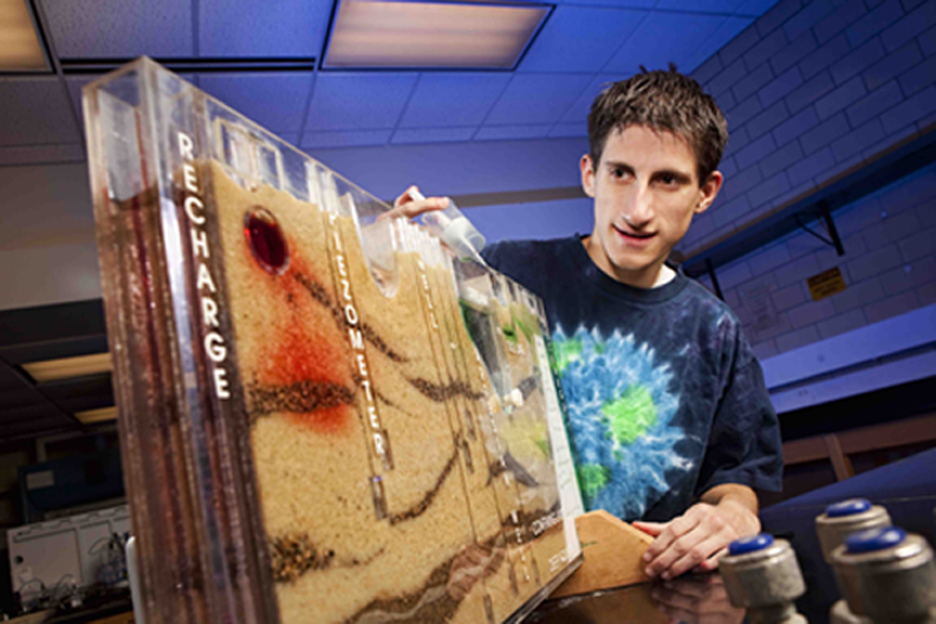
Finding A Future In Ecological Restoration
Andrew Paxson spent his summer biking, canoeing, mussel hunting, weeding and educating others about the importance of ecological preservation. It was an intern- ship that fit him perfectly.
“We covered ecology, history, philosophy, economics, botany and geology all in nine weeks,” Paxson says. “The internship helped me understand that I’d like to pursue a career in ecological restoration.”
Paxson, a senior in environmental science, spent last summer as an intern with the McHenry County Conservation District at Glacial Park. It’s an area north-west of Chicago and north of Algonquin, Ill. The 3,500-acre park is located one hour north of where Paxson grew up hiking and enjoying water sports.
“I like to challenge interns with basic questions,” says Tom Simpson, field station ecologist with the McHenry County Conser- vation District. “This summer we had many involved discussions about how and why we do conservation. Andrew was always engaged in the discussion, which helped everyone else participate.”
This summer brought hot, dry weather to most of the Midwest, which made it challenging to work outside Paxson says. At times he was worried about starting fires with vehicles used in the park. As streambeds began to dry up, he also participated in a mussel rescue and survey.
“We were on our hands and knees in the river trying to find these mussels in the mud, it was like finding gold,” Paxson says.
When he returned to Iowa State this fall, he found the drought also dried up his water-sampling job. For the past three years Paxson has taken water and sediment samples from Squaw Creek to measure E. coli. The water sampling not only provided a job, but a basis for his research.
“The data is interesting because we have samples from flood years and from last spring when the creek began drying up,” Paxson says.
Michelle Soupir, professor of agricultural and biosystems engineering, says Paxson’s help with data collection will provide the basis for stream modeling. The project not only measured E. coli in the water, but also in the streambed.
“He went out weekly and collected water and sediment samples,” Soupir says. “We found that bacteria concentrations in the bottom sediment was higher than the overlying waters.”
Paxon’s research focused on plotting E. coli concentrations in watersheds using geographic information systems technology. The results will be included in a modeling project used to predict E. coli concentrations in streams. He presented his research in poster sessions through the Science With Practice program and at the Research at the Capitol event in Des Moines. Both programs give undergraduate students research experience with mentors and faculty.
Paxson served as president of the Soil and Water Conservation Club Student Chapter from 2009 to 2012, which builds water flow models for educational groups. He also was a member of the Skunk River Navy, a student group that cleans trash out of the river. He also gained practical experience serving on Iowa State University’s Storm water committee.



